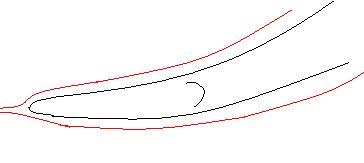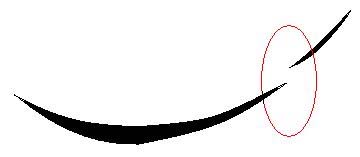MCLAREN TECHNICAL ANALYSIS “SERRATED” REAR WING PART 2
We said that the teeth insert in the upper profile (READ ARTICLE 1) on the rear wing improves efficiency just for the fact that we cut down aerodynamic resistance. The air is not stopped by a vanishing edge completely perpendicular to its direction, but around the items that do not force it to stop completely. There is a problem though, these teeth are no longer such an insurmountable obstacle, but it is clear that they also have a volume and must be bypassed in some way from the stream. In the vicinity of this new component, the flow will change, however its trajectory and some of it will have to pass from the lower part.
The flow that passes from the lower part, the lower red line, must pass through a narrow passage, which means to blow between the two profiles, like the classic cars of Formula 1
With the addition of the serrated profile however, the transition has been reduced too much and if it is true that a reduction in the passage leads to a decrease in pressure because of accelerating air, reducing it too much could also lead to instabilities in the flow disadvantage. Note that each tooth inserted has a corresponding recess in the trailing edge of the rear profile, precisely to avoid too large of a passage and disrupt the flow.
This can be seen if you look at the geometry of the rear of the car.
> PART 1
Written BY ING. AIMAR ALBERTO WEB SITE :
AIMARALBERTO.WIX.COM/AEROSPACE-WORLD
Translation by Christopher M. Uhl – Twitter





